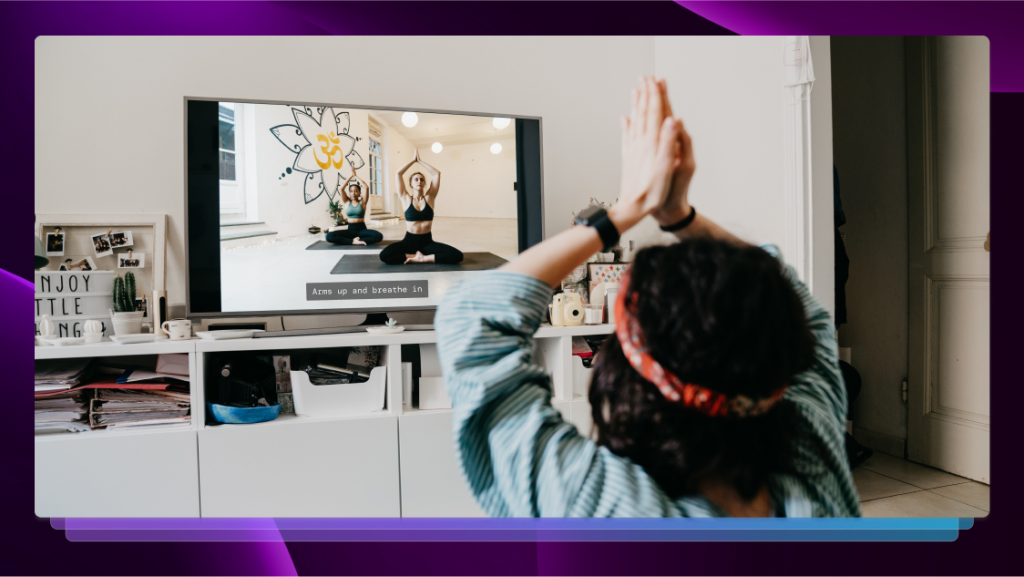The Complete Guide to Closed Captioning on YouTube TV
Closed captions provide written descriptions of the dialogue and audio in a video. Here's our guide on closed captioning for YouTube TV.

Closed captions appear on video content from YouTube videos to television shows or movies, and not only provide a written version of the dialogue being spoken, but also describe the music or other scene elements. This helps people who are hard-of-hearing engage with video content and get the full idea of what’s happening on screen.
On YouTube TV, which now has 8 million subscribers and counting, closed captioning is automatically-generated, and users can toggle it on and off depending on their device type.
We put together a guide to closed captioning on YouTube TV to help you figure out how to turn captions on (or off), and what to do if they aren’t working properly.
Does YouTube Have Automatic Closed Captioning?
YouTube uses speech recognition to automatically create captions for its creators’ videos, though they say on their website that the quality of the captions might vary and encourage creators on the platform to add their own professional captions (like those provided by Rev’s YouTube integration!).
For those who do opt to use YouTube’s automatic captions feature, the captions are available in: Arabic, Dutch, English, French, German, Hebrew, Hindi, Indonesian, Italian, Japanese, Korean, Portuguese, Russian, Spanish, Turkish, Ukrainian, and Vietnamese.
On YouTube TV, closed captions are also available and will play automatically. Captions for live television and live streams are only available in English.
Turning YouTube TV Captions On and Off
While the basic mechanism is the same, turning on YouTube TV subtitles varies from platform to platform. Let’s look at some popular platforms and how to turn off closed captions on YouTube TV.
YouTube TV Captions: Apple TV
If you have an Apple TV, you can toggle closed captioning on and off while playing a video. Follow the steps below to do it.
- Make sure your Apple TV is connected to the internet.
- Open the YouTube TV app on your Apple TV.
- Turn on a channel or video.
- Select “No Closed Captioning (No CC)” to turn off captions, or don’t select this to leave them on.
YouTube TV CC and LG Devices
LG televisions have installable apps like many other types of TV. You will toggle the closed captions on and off in the YouTube TV application.
- Open the YouTube TV app on your LG device.
- Select a channel to start playing the video.
- Select the YouTube TV closed captioning language you want, or select “Off.”
Roku YouTube TV Captions
Those living in Roku City can toggle closed captioning on and off via the YouTube TV streaming channel.
- Navigate to the “Streaming Channels” tab.
- Launch the YouTube TV app.
- Choose a channel to start playing the video.
- Select the “No CC” button to turn off closed captioning.
Samsung Television YouTube TV Captions
Those living in Roku City can toggle closed captioning on and off via the YouTube TV streaming channel.
- Navigate to the “Streaming Channels” tab.
- Launch the YouTube TV app.
- Choose a channel to start playing the video.
- Select the “No CC” button to turn off closed captioning.
YouTube TV Closed Captioning On Your Phone
YouTube TV is also available as a phone application, where you can toggle closed captions on or off.
- Open the YouTube TV application on your phone.
- Select a channel to start playback.
- Look for the “CC” button and select it.
- Select the caption language you desire.
Troubleshooting YouTube TV CC Issues
If closed captions aren’t appearing while you’re watching YouTube TV, it could be due to a system or playback error, a glitch, or something else. There are several ways to troubleshoot your captions and make them reappear without having to contact support.
If YouTube TV closed captioning won’t turn off or on, try the following:
- Make sure your location settings are set to your correct location.
- Power cycle the device, by turning it off for a minute or so and then back on.
- Close down the YouTube TV app and then reboot it.
- Make sure your internet connection is secure and working.
- Check to see if the YouTube TV app requires an update.
Adding Captions to Your Own Content
On YouTube, adding your own captions to your content can make sure that your content is accessible to those who are Deaf or hard-of-hearing. Generating your own captions and adding them to your content helps to make sure that the captions are accurate and helpful for your viewers.
There are many services, like Rev’s AI and human caption options, that can help you generate compliant captions, so all you have to do is add them to your video content on the YouTube Studio.
First, get your YouTube captions from Rev:
- Navigate to Rev’s closed captioning page.
- Select Get Captions.
- Select YouTube on the “Pull videos directly from your account” section.
- Select the video(s) you want captions for.
- Select “Add selected to cart.”
- Check out to start the process.
Once you get your captions, follow the below instructions to add them to your videos:
- Open YouTube Studio
- Select Upload videos
- Choose your desired video
- Select Next
- Select Subtitles
- Upload a caption file to your video
Take Action on Captions
34% of Americans keep captions on all the time. So if you want people to enjoy your content, it’s a good idea to have them on! Here at Rev, we want to make your caption process easy and accurate. Our AI-generated caption service can help you easily add captions to your content.
Learn more about Rev’s AI captions.
Subscribe to The Rev Blog
Sign up to get Rev content delivered straight to your inbox.



